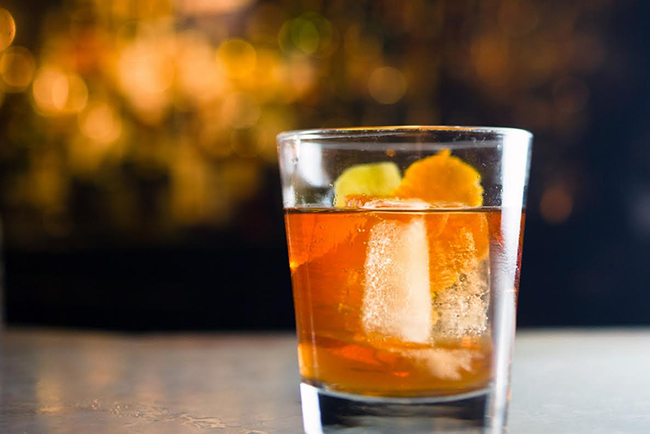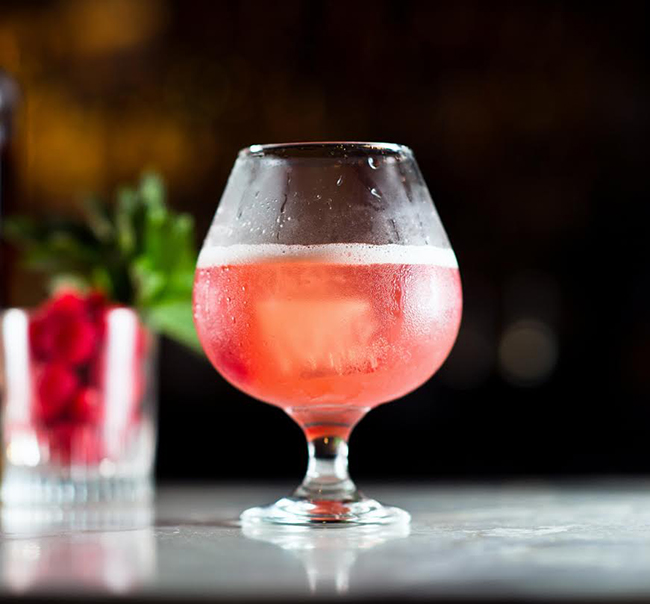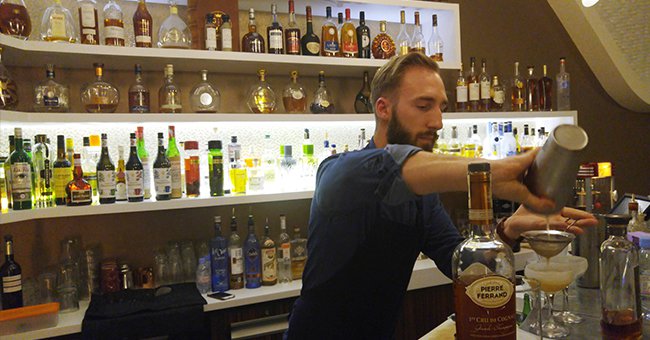Cognac was a signature component of some of America’s first classic cocktails — the original Sazerac, the Sidecar and the Vieux Carré make for a fairly notable trifecta, not to mention traditional punches and eggnog. Yet, the spirit dropped into the abyss over the decades, and is only now beginning to truly return. How has the Cognac cocktail been revived, which brands work best, and what else should you know about crafting excellent Cognac cocktails?
Popularizing Cognac in France
An intriguing starting point to consider is that the French by and large do not drink Cognac. The statistics are staggering — namely that, according to the Bureau National Interprofessionel du Cognac (BNIC), 98 percent of all Cognac production is exported outside of France. It goes to the United States, the United Kingdom, Asia, and all over the globe. But they just don’t drink the stuff in France.
To try to popularize the spirit in its home country, BNIC collaborated with a group of international bartenders in 2008 to develop a signature Cognac libation, what’s now known as the Cognac Summit. Consider that the drink has its own website. It’s crafted with Cognac, fresh ginger and lime zest, freshly squeezed lemonade, and optionally, a cucumber peel as a garnish.
It’s not the quickest cocktail for easy at-home consumption or rapid-fire production at the bar, though. What you’ll find instead in France is that Cognac and ginger is quite popular and readily available as a hassle-free substitute. In particular, Fever-Tree’s ginger ale and ginger beer were nearly always on hand during a recent trek through the Cognac region.
Cognac is traditionally consumed as either an aperitif or digestif. During meals, therefore, a Cognac and ginger steps in similarly to how highballs in Japan do: as a lighter, refreshing mixed drink to enjoy with food. Even representatives from major Cognac houses would be seen unabashedly mixing their brand’s XO with ginger or tonic as an easy choice at mealtime.
 The Chanticleer is an ancestor to the Sazerac and features Pierre Ferrand 1840 Original Formula Cognac. Photo courtesy of Pierre Ferrand.
The Chanticleer is an ancestor to the Sazerac and features Pierre Ferrand 1840 Original Formula Cognac. Photo courtesy of Pierre Ferrand.
Cognacs Made for Cocktails
Cognac’s absence from the cocktail scene is more accurately described as an absence from craft cocktails and mixology. “Sometimes it seems like the big guys are more focused on the club scene, than the cocktail scene,” says Chad Robinson, brand ambassador for Catoctin Creek, a Virginia distillery known for both its whiskey and brandy.
Robinson touches on an important point for how the bulk of Cognac is sold, marketed and consumed in the United States, with deep ties to simple, party-ready mixed drinks such as Cognac and Coke. Consider that over 70 percent of Cognac sales in the United States fall into the VS category, according to the most recent statistics from the Distilled Spirits Council of the United States (DISCUS).
Therefore, while the Cognac Summit was a concerted effort by the industry to create interest in high-end Cognac cocktails, elsewhere, the approach goes even deeper. There are now a handful of well known labels on the market which have been created specifically for cocktails.
In 2011, Alexandre Gabriel teamed up with David Wondrich to produce Pierre Ferrand’s 1840 Original Formula. The concept was to create a Cognac similar to what would have been available in the heyday of those classic Cognac cocktails.
1840 Original Formula is bottled at 45% ABV, stronger than the vast majority of Cognacs, and is made entirely with grapes from the Grand Champagne region. It’s a blend of younger eaux de vie aged in dry cellars, providing spicier notes, with older eaux de vie aged in humid cellars, offering deeper, more nuanced flavors.
 The Jackson Punch, adapted by David Wondrich from Jerry Thomas’s 1863 recipe, calls for Pierre Ferrand 1840 Original Formula and rum. Photo courtesy of Pierre Ferrand.
The Jackson Punch, adapted by David Wondrich from Jerry Thomas’s 1863 recipe, calls for Pierre Ferrand 1840 Original Formula and rum. Photo courtesy of Pierre Ferrand.
“It’s wonderful in a cocktail because of its taste profile and its intensity,” explains Gabriel. “I think that is the reason it is so successful with the great bartenders.”
“One thing is certain, the average age of the Cognac aficionado is getting younger,” he continues. “I used to be the youngest in most of the tastings that I conducted, now I am often the oldest and not just because I am aging!”
Robinson chimes in that 1840’s high ABV adds to its appeal. “Brandies are still almost universally below 90 proof,” he says, citing 1840 as a “notable exception.” With a higher ABV, he says it’s easier to showcase the spirit in cocktails which are actually worth drinking.
Another Cognac introduced to the market intentionally for cocktail consumption is D’USSÉ, unveiled in 2012 and produced by Baron Otard. The brand offers a VSOP and an XO, both of which were created for the American market. Similarly to 1840 from Pierre Ferrand, D’USSÉ’s blend incorporates eau de vies which were aged in both humid and dry cellars. The goal was to achieve a balance between spiciness and smoothness, while providing enough structure to hold up to cocktails.
Martell, which is currently celebrating its 300th anniversary and is the oldest major Cognac house, released Martell Caractère in 2013. As explained by Martell cellar master Benoit Fil, it’s a younger blend made specifically for cocktails, including citrus notes and some of the range’s signature raisin flavors, along with a bolder, spicier touch.
Each of these brands offers signature cocktail recipes to try with their particular cocktail-centric Cognac. A smart starting point, though, may be to simply go back to that original trifecta of classics, or experiment with the Cognac Summit. Or, sub in Cognac in other staples; try a Cognac Old Fashioned, or a Cognac Sour. Whatever you put together, it’s time to enjoy Cognac in cocktails, and to consider the snifter by the fireplace myth debunked.





